Project: Masks for The Little Prince, part one!
We've begun production on The Little Prince, perhaps the most crafts-heavy show of the season. It features tons of masks, hats, and other crazy stuff (as you would expect, given that you have characters playing flowers and animals).
I've already begun the mask-making process because i'd like for the actors to have their masks in rehearsal from Day One--that way, every bit of the character development is informed by the mask and we avoid the sort of creative dissonance that can come from introducing a mask after the actor has begun to create a physicality for the character.
Some time back i posted about my maskmaking class' first project, maquettes. I'm a big believer in maquettes--it takes me around an hour or two to make one and they are a great way to have a visual 3D point of reference for talking with the designer.
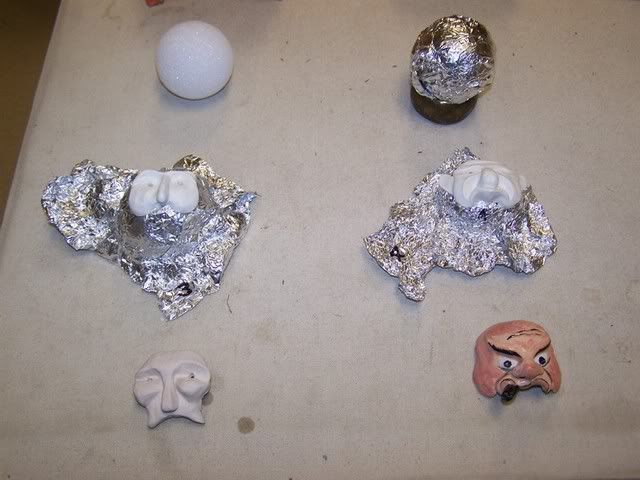
This photo breaks it down for you, how the maquette gets made. The styrofoam ball serves as a vague head form (ideally i'd use a darning egg or styro egg for a more headlike shape, but i didn't have either handy and had to work fast) and is covered in foil. I sculpt the maquette onto the foil using polymer clay, then remove the foil from the ball to bake the clay. After the clay has been fired, it's sealed and painted and sealed a second time.
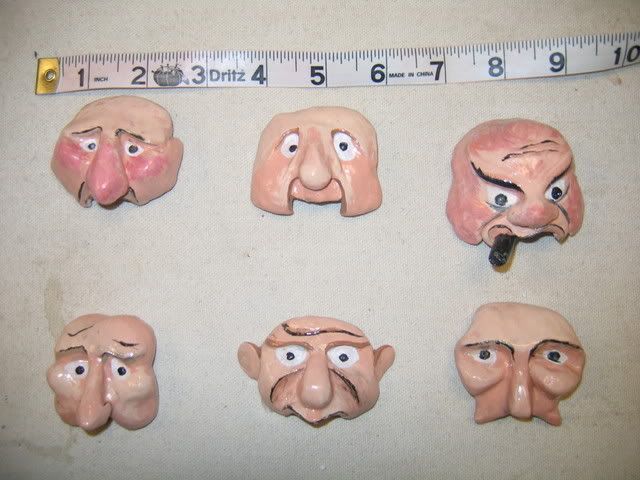
Six painted maquettes with a tape measure for size reference.
McKay Coble, who is designing costumes and sets for The Little Prince, was able to give me a lot of great feedback about what these, what changes she'd like to see in the sculpting of the full-size masks, painting ideas, etc. Most of these will change in the final sculpt/paint.
The next step of the process is to consider what to use for a matrix base. (A matrix is the sculpture off of which the final mask is made, and a matrix base is basically a model of the actor's head.) Sometimes you want a life cast--if the actor needs the mask to fit closely for example--and sometimes a form can be used.
For most of our actors, i used a padded form, but for one actress who will be doing some pretty unusual physical work, we decided to go with a life cast. Life casting can seem daunting but isn't actually that difficult, unless you have an actor who is claustrophobic. Luckily we did not. There are lots of sites out there that go over the process of life casting so i'm not going to write that up here.
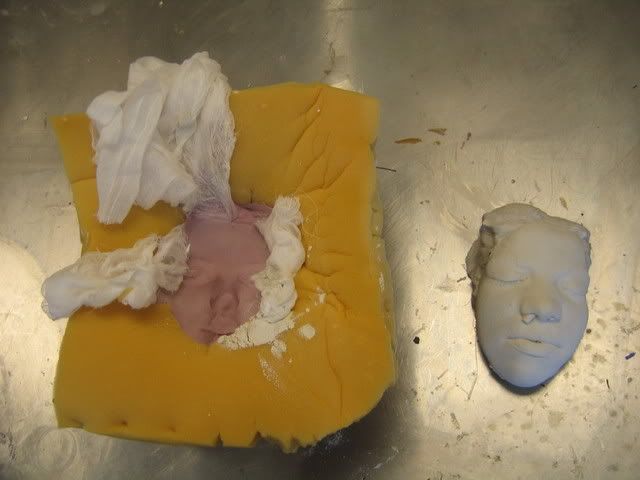
Alginate mold and plaster life cast of PRC actress Flor de Liz Perez
Everyone else i decided to go with a quicker method--padding a form based on facial measurements. I take measurements of the actors' faces, noting the distance from their features to their hairline, chin, etc. Then i cut into a styrofoam head form and pad it out with EVA foam ("craft foam") so that it matches their measurements. The bases are mounted on vinyl-covered foamcore board along with the maquette for the assigned mask and labeled for tracking purposes.
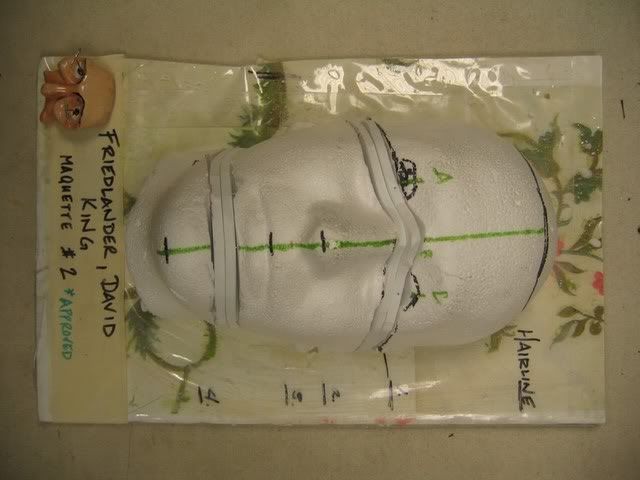
Matrix base for PRC actor David Friedlander
The matrices themselves are sculpted onto the matrix bases in DAS clay, a natural air-drying clay with a short working time and minimal shrinkage. The masks will then be shaped on the matrices using Fosshape 600 thermoformable felt. One of my students made her simple mask project with this method and it struck me as an ideal method for our masks.
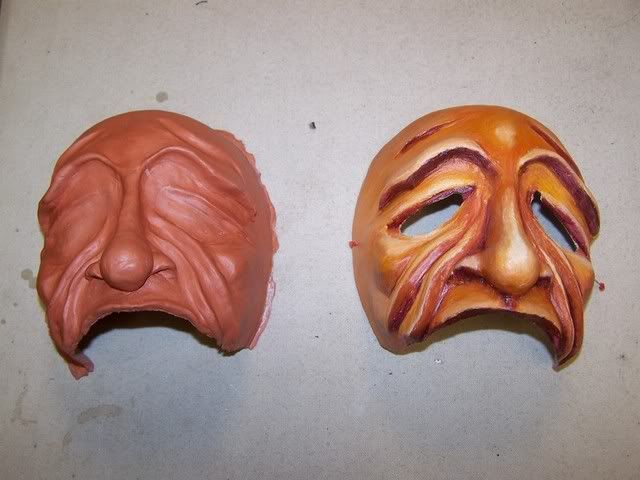
Simple mask matrix and final mask by Jacki Blakeney Armin
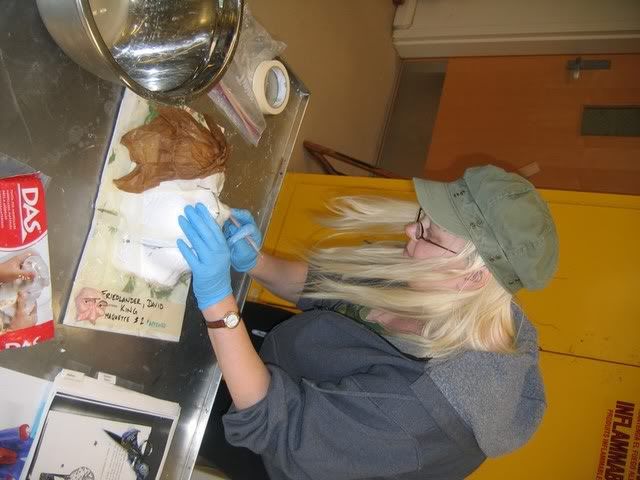
Me sculpting onto one of the matrix bases
To Be Continued...!
I've already begun the mask-making process because i'd like for the actors to have their masks in rehearsal from Day One--that way, every bit of the character development is informed by the mask and we avoid the sort of creative dissonance that can come from introducing a mask after the actor has begun to create a physicality for the character.
Some time back i posted about my maskmaking class' first project, maquettes. I'm a big believer in maquettes--it takes me around an hour or two to make one and they are a great way to have a visual 3D point of reference for talking with the designer.

This photo breaks it down for you, how the maquette gets made. The styrofoam ball serves as a vague head form (ideally i'd use a darning egg or styro egg for a more headlike shape, but i didn't have either handy and had to work fast) and is covered in foil. I sculpt the maquette onto the foil using polymer clay, then remove the foil from the ball to bake the clay. After the clay has been fired, it's sealed and painted and sealed a second time.

Six painted maquettes with a tape measure for size reference.
McKay Coble, who is designing costumes and sets for The Little Prince, was able to give me a lot of great feedback about what these, what changes she'd like to see in the sculpting of the full-size masks, painting ideas, etc. Most of these will change in the final sculpt/paint.
The next step of the process is to consider what to use for a matrix base. (A matrix is the sculpture off of which the final mask is made, and a matrix base is basically a model of the actor's head.) Sometimes you want a life cast--if the actor needs the mask to fit closely for example--and sometimes a form can be used.
For most of our actors, i used a padded form, but for one actress who will be doing some pretty unusual physical work, we decided to go with a life cast. Life casting can seem daunting but isn't actually that difficult, unless you have an actor who is claustrophobic. Luckily we did not. There are lots of sites out there that go over the process of life casting so i'm not going to write that up here.

Alginate mold and plaster life cast of PRC actress Flor de Liz Perez
Everyone else i decided to go with a quicker method--padding a form based on facial measurements. I take measurements of the actors' faces, noting the distance from their features to their hairline, chin, etc. Then i cut into a styrofoam head form and pad it out with EVA foam ("craft foam") so that it matches their measurements. The bases are mounted on vinyl-covered foamcore board along with the maquette for the assigned mask and labeled for tracking purposes.

Matrix base for PRC actor David Friedlander
The matrices themselves are sculpted onto the matrix bases in DAS clay, a natural air-drying clay with a short working time and minimal shrinkage. The masks will then be shaped on the matrices using Fosshape 600 thermoformable felt. One of my students made her simple mask project with this method and it struck me as an ideal method for our masks.

Simple mask matrix and final mask by Jacki Blakeney Armin

Me sculpting onto one of the matrix bases
To Be Continued...!